Our dear friend, Jay Xu, Director of the Asian Art Museum in San Francisco, his wife Jennifer, and their lovely daughter Toni have traveled with Bev, Zen, and I to various parts of Asia, including Siem Reap and the temples of Angkor Wat. We believe this overview, as well as our Hindu deity guide, provide great insight into the magical site that is Angkor Wat.
We believe the best tactic when visiting Angkor Wat is to split your day into a.m. and p.m. sessions. The temples are most impressive at sunrise and sunset as the weather is the coolest, offering the best photo opportunities and the fewest visitors. Sunrise is magical, watching the towers appear gradually out of the darkness as the sun bathes Angkor in its morning glow.
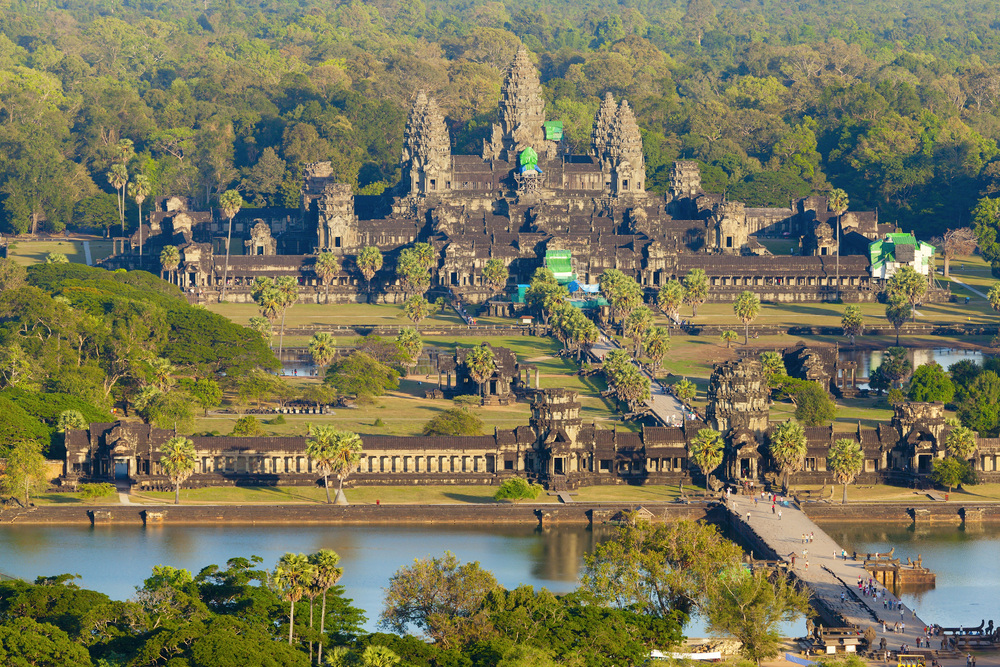
Temples of Angkor Wat
Among the first westerners to “discover” Angkor Wat in 1864, French naturalist/explorer Henri Mouhot described the Khmer ruins as “grander than anything left to us by Greece or Rome” and we find it difficult to disagree. The temples of Angkor, built between the 8th and 13th-centuries, when the Khmer civilization was at the height of its development, represent one of human-kind’s most astonishing and enduring architectural achievements. These temples are spread out over approximately 40 miles around the village of Siem Reap, about 192 miles from Phnom Penh and range from single towers made of bricks to vast stone complexes. There are two main sites where the Khmer temples are located. The first is Roulos, the first Khmer capital in the Angkor area, which is about 10 miles SE of Siem Reap, where only a few of the earlier temples were built. In the late 9th-century, Yasovarman I moved the capital to the immediate vicinity of Siem Reap. This much larger site, the City of Angkor, is where the majority of Khmer temples are located. However, Khmer temples can also be found in many other parts of Cambodia, China, Thailand, Laos, and Vietnam. Angkor’s mix of Hindu and Buddhist iconography is truly remarkable.
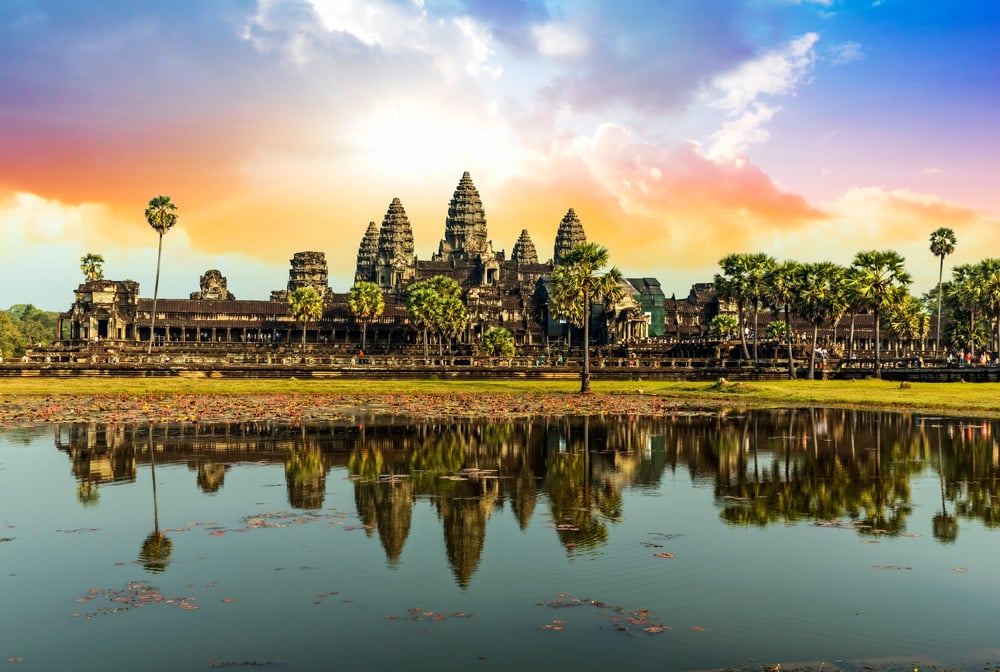
Angkor Wat
This huge pyramid temple, surrounded by a moat symbolizing the Hindu cosmos (570 feet wide x 4 miles long) was built by Suryavarman II between 1113 and 1150 and is regarded as the supreme masterpiece of Khmer architecture! Angkor Wat is dedicated to the Hindu deity Vishnu. The temple’s balance, composition, and beauty make it one of the finest monuments in the world. The expansive bas-relief carvings depict famous meticulous scenes from various mythological stories and historic events. Climb the steps to reach the second tier and then the third, and finally the central courtyard within, by climbing the steep steps oriented towards any of the four cardinal points. Please be warned that these steps are extremely steep and it is suggested that the steps on the south be taken, as they have now been fitted with a handrail.
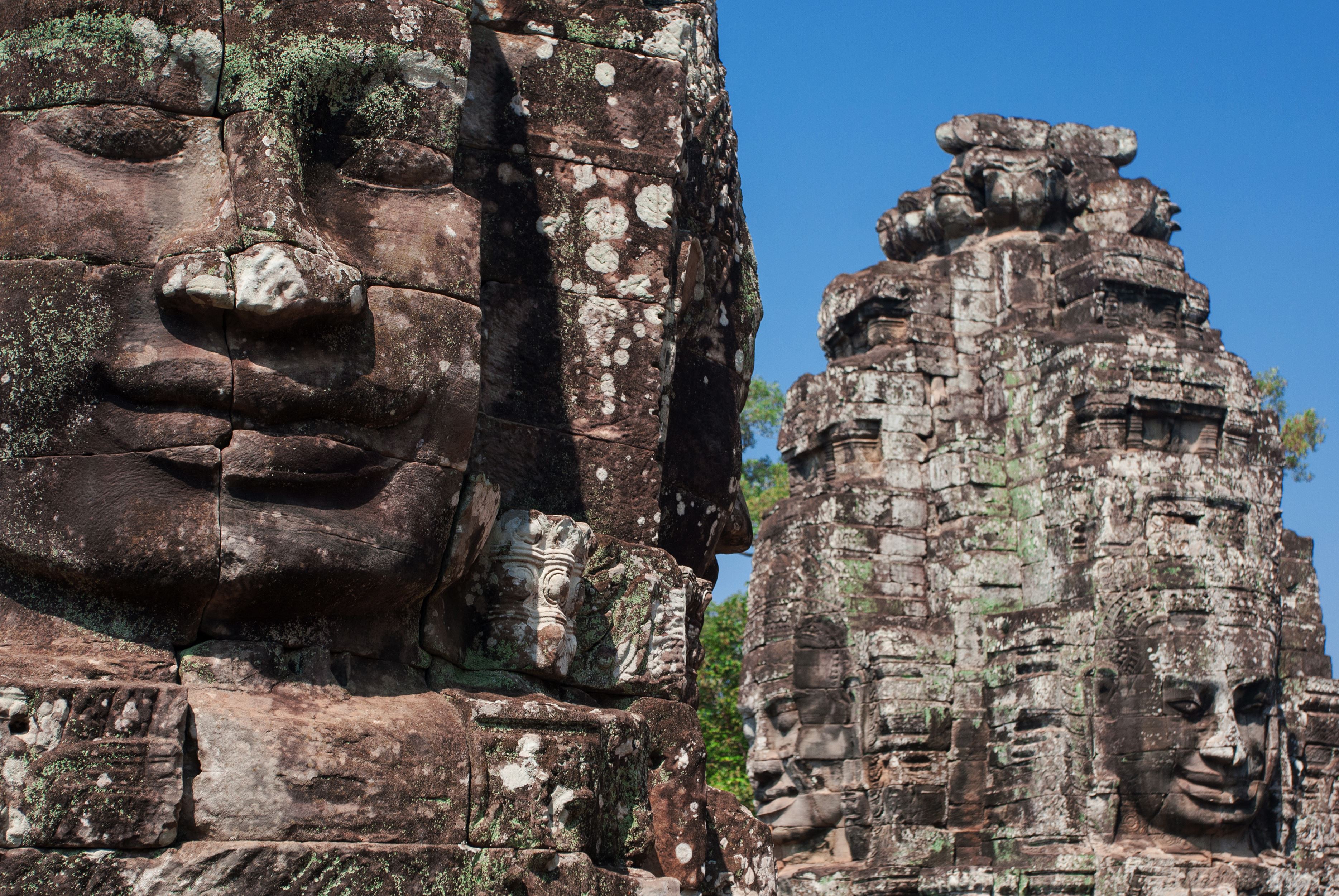
Angkor Thom-Bayon
The striking Bayon Temple, with its 54 mesmerizing “face towers”, is a truly remarkable site within the Angkor Thom complex. Every facet is carved with a large mystic appearance, the shadow of a smile on its lips, assumed to be that of King Jayavarman VII, the most productive architect of the Khmer temples. What looks like a chaotic pile of giant rocks is, in fact, a labyrinthine of corridors, stairways, and colonnades that delight the senses. Each of the 37 surviving towers is adorned with four serene heads even more surreal at sunset.
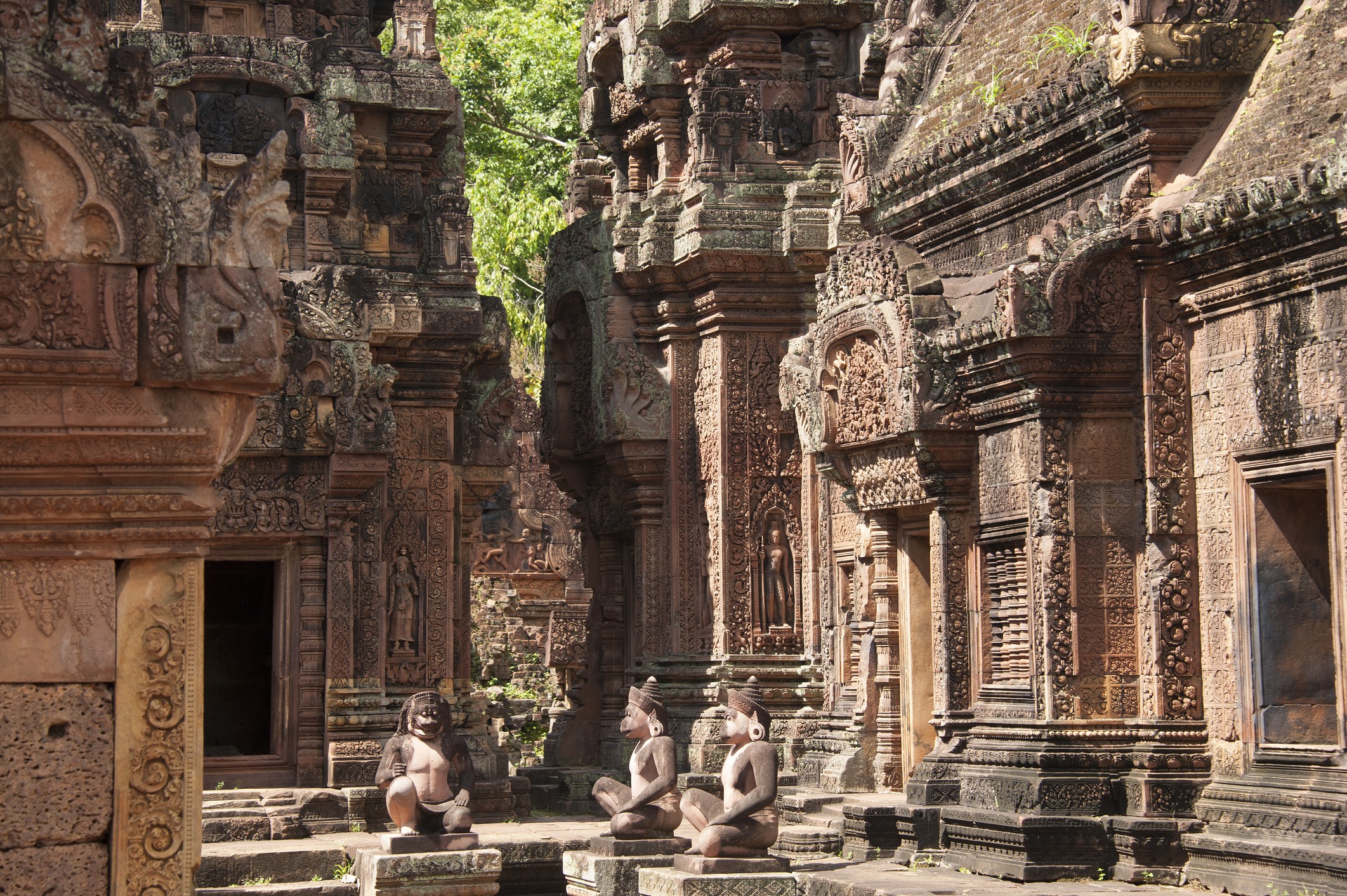
Banteay Srei
This small, delicate temple, approximately 15 miles from Siem Reap village, was commissioned by Yajnavaraha, a Sanskrit scholar, built by Jayavarman V, and finished in 968 AD. Banteay Srei, meaning “Citadel of the Women,” is a Hindu temple dedicated to Shiva. It is said the temple must have been built by a woman, as the elaborate carvings are too fine for the touch of a man. The carvings are breathtaking in their delicacy. Comprised of several buildings, Banteay Srei features magnificent stone carvings depicting scenes from classical Southeast Asian literature (a nod to Yajnavaraha’s research) as well as impressions of Hindu deities and beautiful three-dimensional filigree relief work in pink sandstone. Almost every inch of the buildings is covered in decoration, most with delicate apsaras (heavenly dancers) with lotus flowers in their hands. This is among our favorite temples!

Baphuon
One of the few Hindu temples within Angkor Thom’s gates, Baphuon dates back to the 1060s and was recently reopened after a lengthy restoration. Located northwest of the Bayon, the temple represents Mt. Meru (sacred to Hinduism). Built in the western face of the Baphuon is a giant reclining Buddha, added in the 15th-century, after the region converted from Hinduism to Buddhism.
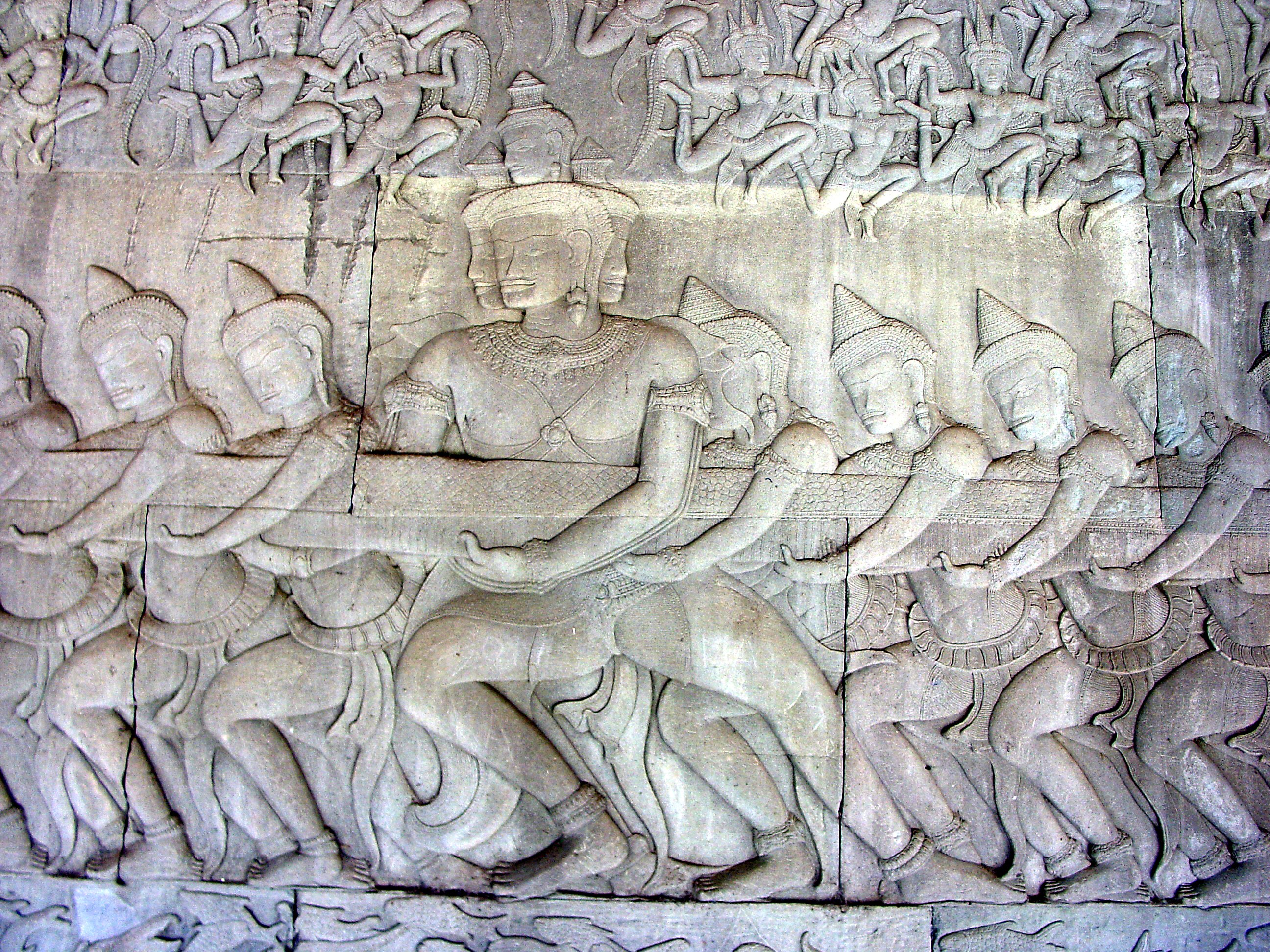
Churning of the Sea of Milk
The massive “Churning of the Sea of Milk” bas-relief, which stands apart for the quality of its carving, ingenious composition, and the impressive measures conservators have taken to ensure its longevity. The relief depicts an ancient Indian story. Lord Vishnu cajoles demons (asuras) and gods (devas) into working together to produce an elixir of immortality they both covet. They churn the waters of the cosmic ocean using a sacred mountain as a pivot and a supernatural, five-headed snake as a rope.

Elephant Terraces
This impressive 8.5 foot wall, with its carved elephants and giant garudas that adorn it, spans the heart of Angkor Thom. Garudas are mythical creatures resembling birds found in both Hindu and Buddhist mythology.
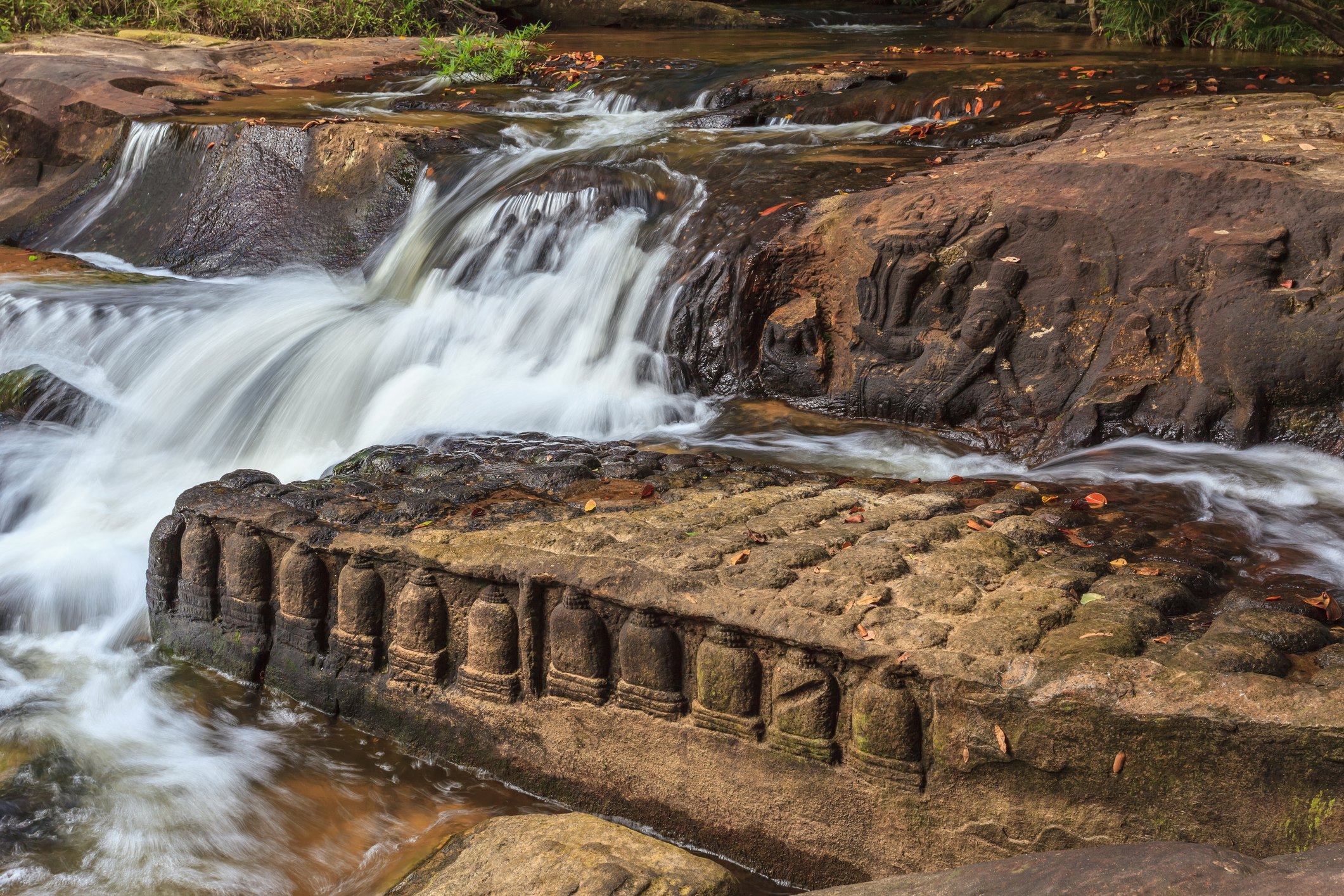
Kbal Spean
Kbal Spean is a less visited Hindu-archaeological site that we feel is an ideal setting for light hiking. Set deep in the jungle, the amazingly carved riverbed is referred to as the “River of 1,000 Lingas.” While the country is now primarily Buddhist, Cambodians widely regard these waters as sacred. Partially obscured by the river’s current, Hindu deities with “lingas” (Shiva) can be found meticulously sculpted into the rock of the riverbed. Dotted around this area are numerous sacred Hindu symbols (called yoni-lingam) which serve as remnants of the country’s once-prominent religion of Hinduism. Kbal Spean was just recently discovered by Western eyes in 1969 when ethnologist Jean Boulbet was shown the area by a local hermit. Following years of civil war, the site became open to the public in 1998. An approximately 1.2 mile/2 km uphill walk to the carvings, the winding path is very nice. Don’t miss the outstanding carvings of Vishnu in the upper section of the river!
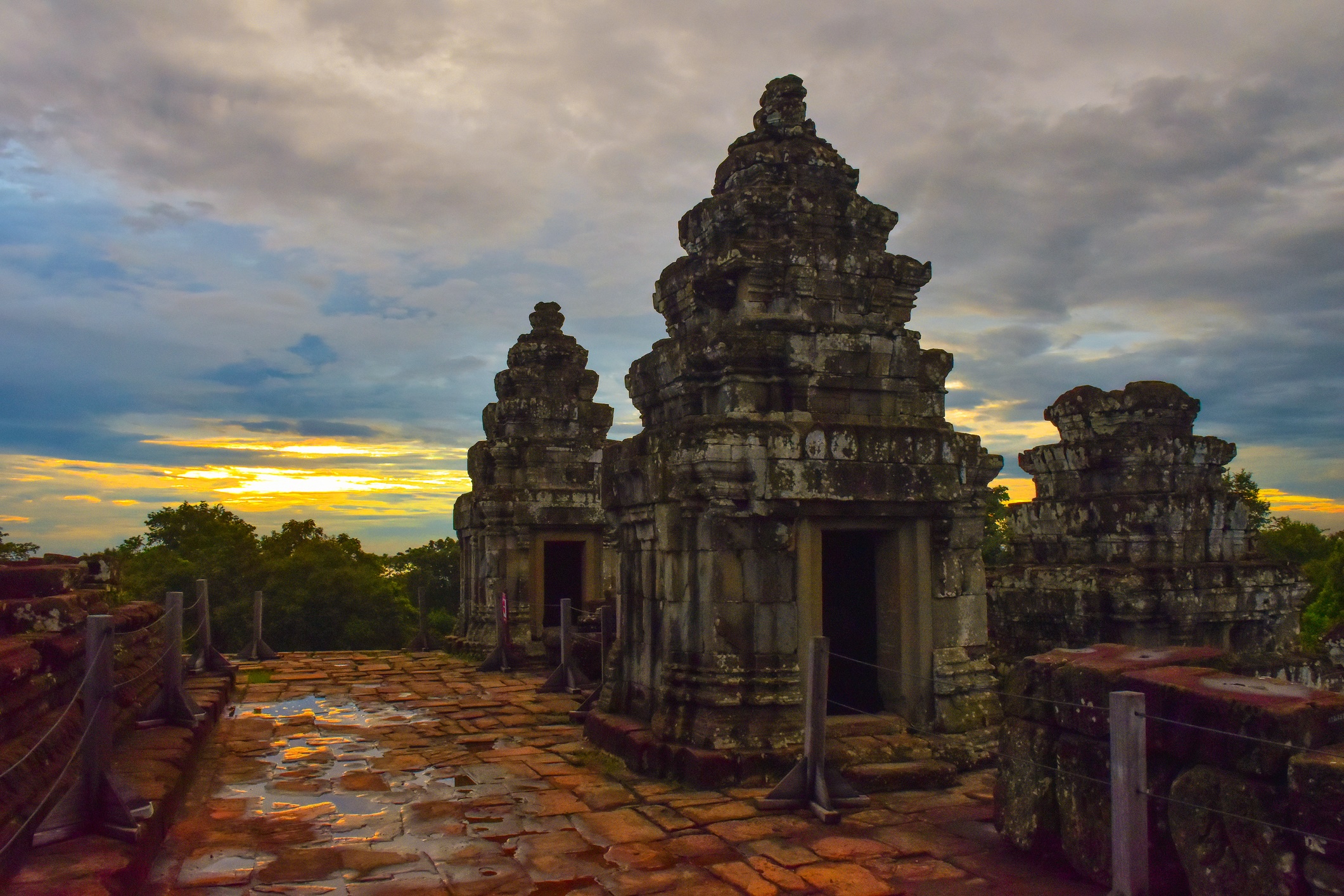
Phnom Bakheng
The first temple-mountain constructed in Angkor with a commanding hilltop location is an extremely popular spot for sunsets. The final climb to the top of the temple is steep and very dangerous at dark. Elephants will carry you to the hilltop for a fee but the temple stairs you still have to climb on your own. When to visit: A hike up Phnom Bakheng affords fine sunset views of Angkor Wat. It is misty and mysterious and gives you a sense of jungle and forest vegetation.
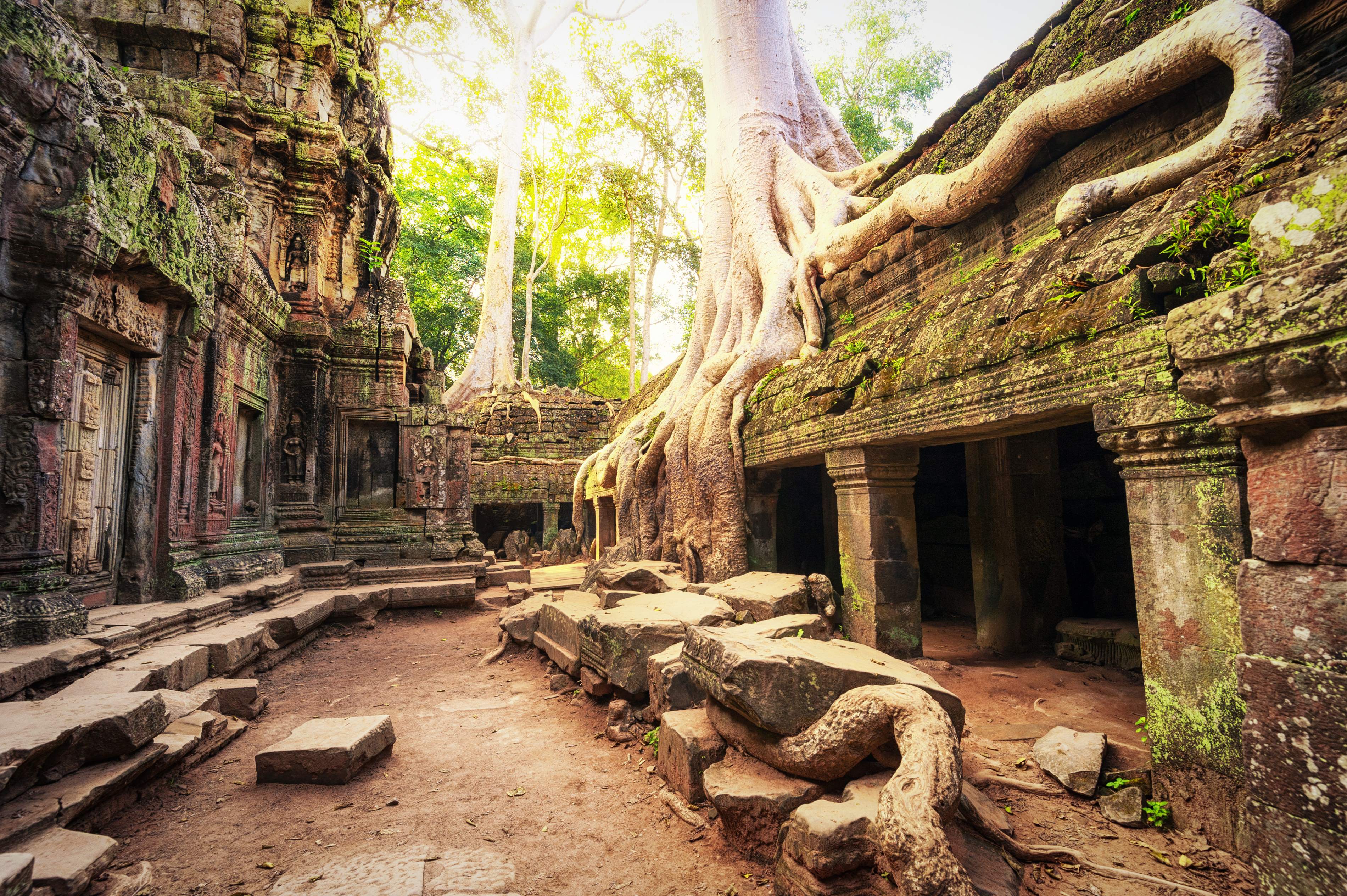
Ta Prohm
Built during the time of King Jayavarman VII, this is considered one of the most beautiful of the Khmer temple complexes that have not been restored but left surrounded by jungle. The photogenic and atmospheric combination of trees growing out of the ruins and the surrounding jungle make it one of Angkor’s most popular temples after Angkor Wat and the Bayon. Based on the masses converging in the relatively small area of Ta Prohm, we respectfully suggest a 6:15 a.m. departure from the Raffles for a more special, personal morning visit.
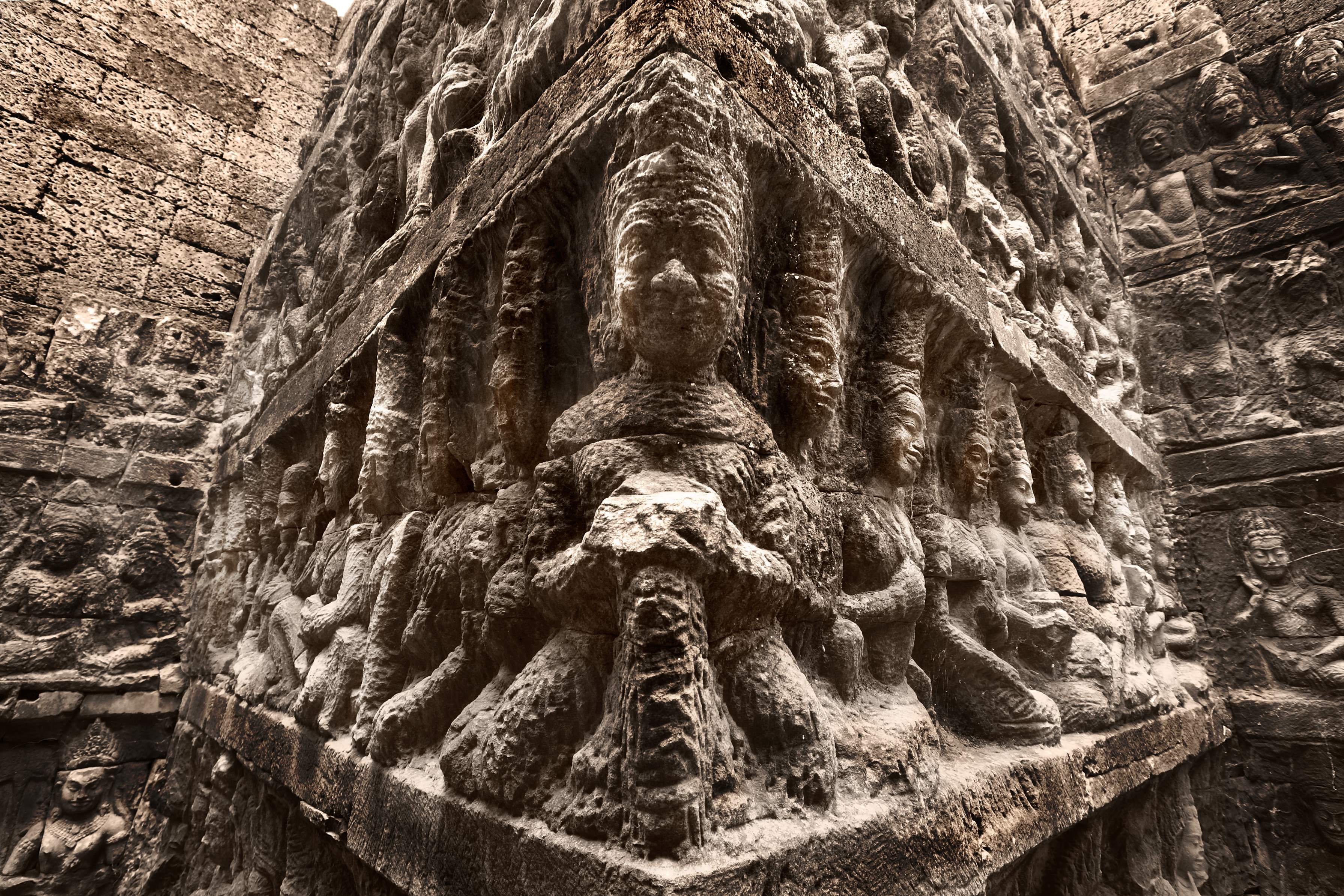
Terraces of the Leper King
This terrace was built just north of the Elephant Terrace and is named for the seated statue which once occupied the platform (now moved to the National Museum in Phnom Penh). The statue, formerly thought to represent a legendary “leper king”, now is considered to represent Yama, the Lord of the Dead. The terrace itself might have functioned as a cremation platform. It is 80 feet long and shaped like a “U”. Its north, east, and south walls face outward and are deeply carved with seated gods and goddesses. Within, and separated by a narrow trench, there is another set of carved walls.

